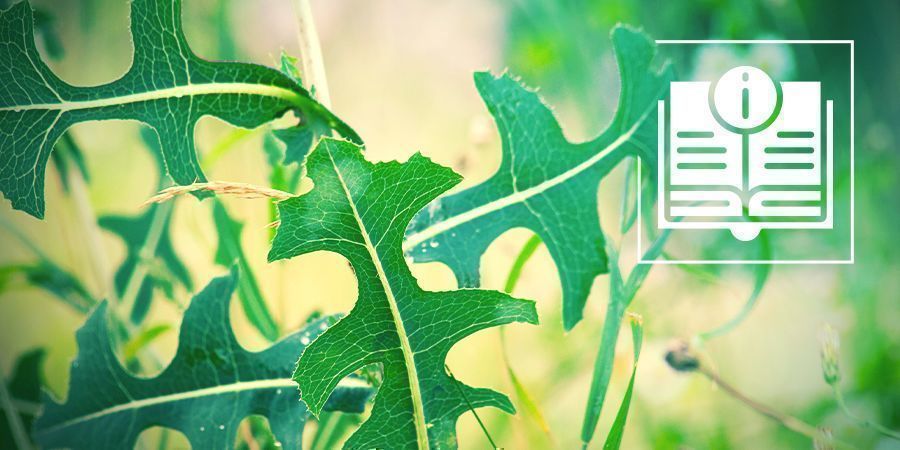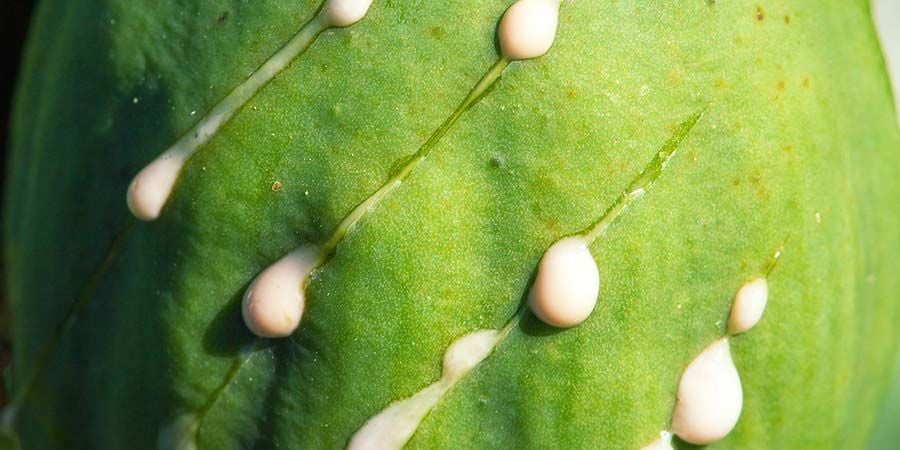-
Seedshop
-
Feminized
Cannabis seeds -
Autoflowering
Cannabis Seeds -
Regular
Cannabis Seeds -
F1 Hybrid
Cannabis Seeds -
CBD
Cannabis Seeds -
Zamnesia
Cannabis Seeds
-
Top 10’s
- Top 10 Feminized Seeds
- Top 10 Autoflowering Seeds
- Top 10 Regular Seeds
- Top 10 USA Cannabis Strains
- Top 10 Zamnesia Seeds
-
Favourites
- Beginner Strains
- Below 1% THC
- Classic Cannabis Strains
- Cup Winners
- F1 Hybrids
- Fast-Flowering Strains
- High CBD Strains
- High THC Strains
- Mix Packs
- Zamnesia Exclusive Collabs
-
-
Headshop
-
Vaporshop
- Spare Parts & Accessories
- AirVape X
- AirVape XS GO (2021)
- Arizer Air MAX
- Arizer Extreme Q
- Arizer Solo 2
- Arizer V-Tower
- Arizer XQ2
- Boundless CFC 2.0 Vaporizer
- Boundless CFX
- Boundless TERA (V3)
- CRAFTY+
- DaVinci IQ2
- DaVinci IQC
- DaVinci MIQRO
- Dr. Dabber Boost EVO
- Dr. Dabber Stella
- DynaVap Omni 2021
- DynaVap VapCap "M" PLUS 2023
- DynaVap VapCap 'M' 2021
- DynaVap VonG (i) Titanium
- Dynavap The "B" Series
- Eagle Bill
- Firefly 2+
- Flowermate Aura
-
Healthshop
-
Smartshop
-
Shroomshop
-
Growshop
-
Seedshop
All CategoriesSeedshop
-
Vaporshop
All CategoriesVaporshop
- Top 10 Vaporizers
- Spare Parts & Accessories
- AirVape X
- AirVape XS GO (2021)
- Arizer Air MAX
- Arizer Extreme Q
- Arizer Solo 2
- Arizer V-Tower
- Arizer XQ2
- Boundless CFC 2.0 Vaporizer
- Boundless CFX
- Boundless TERA (V3)
- CRAFTY+
- DaVinci IQ2
- DaVinci IQC
- DaVinci MIQRO
- Dr. Dabber Boost EVO
- Dr. Dabber Stella
- DynaVap Omni 2021
- DynaVap VapCap "M" PLUS 2023
- DynaVap VapCap 'M' 2021
- DynaVap VonG (i) Titanium
- Dynavap The "B" Series
- Eagle Bill
- Firefly 2+
- Flowermate Aura
- Flowermate Cap Pro
- Flowermate Slick
- Flowermate V5.0S Pro
- G Pen Connect
- G Pen Elite II
- G Pen Micro+
- G Pen Pro
- G Pen Roam
- Hydrology9 Vaporizer
- Hyer Big-E Rig
- MIGHTY
- MIGHTY+
- PAX Mini
- PAX Plus
- PLENTY
- Pax 3 Vaporizer
- Puffco Peak PRO Smart Rig
- Puffco Peak Smart Rig
- Puffco Plus
- Storm Vaporizer
- The Proxy (Puffco)
- VOLCANO CLASSIC
- VOLCANO HYBRID
- Vape-Lifter
-
Smartshop
All CategoriesSmartshop
- Top 10 Smartshop
- Zamnesia Gift Cards
- After Party
- Aphrodisiacs
- Aromatherapy
- Blue Lotus
- CBD Vape Juice
- Capsule Machines
- Crystals, Gemstones & Minerals
- Dream Herbs
- Drug Tests
- Extracts
- Happy Caps
- Herbal Tea
- Herbs & Seeds
- Incense
- Kanna
- Kratom
- LSA Seeds
- Mescaline Cacti
- Microdosing
- Nootropics
- Relaxing
- Salvia divinorum
- Smart Seeds
- Stimulants
- Supplements
- Tinctures
- Vape Herbs
-
TRIBE
All CategoriesTRIBE
- My Membership
- Spend Gift Points
- Exclusive products
- Earn Extra Gift Points
-
TRIBE
- Early Access
- Refer a Friend
- Information
-
TRIBE
-
Language
 United States
United States
Friday, 18 April and Thursday, 24 April 2025*
Everything You Need To Know About Wild Lettuce
Found along riverbeds and roadsides, the plant grows mainly in parts of central Europe, the Middle East, and several states in North America. Wild lettuce (Lactuca Virosa) is a member of the Asteraceae family, and flowers on a biannual basis.
Far from another salad green, wild lettuce produces a viscous type of latex harnessed for its mind-altering effects and unique impact on the central nervous system. Humans have used the plant for hundreds, if not thousands, of years in folk systems across the planet. Continue reading to learn everything you need to know about this fascinating plant species, including where to find it growing in the wild.
WHAT IS WILD LETTUCE?
Wild lettuce has several names, including Lactuca virosa, bitter lettuce, and opium lettuce. The biennial plant belongs to the same genus as salad lettuce (Lactuca sativa), but their traditional uses vary massively. While one provides a tender source of nutrition, the other is primarily used as a holistic herb.
Wild lettuce produces a latex known as lactucarium. The very name “lactuca” means “milky extract”. This bitter-tasting white substance oozes from the leaves of the plant when scratched or cut, quickly turning brown when exposed to the air. Reports compare the smell of this gooey material to that of opium from the poppy species, Papaver somniferum.
Lactucarium contains an array of phytochemicals that may contribute to the overall effects of wild lettuce. Lactucin makes up around 0.2% of the sap. The molecule forms a white crystalline solid upon extraction and belongs to a group of chemicals known as sesquiterpene lactones. A known adenosine receptor agonist, lactucin may underpin the relaxing and soothing effects of wild lettuce.
Caoutchouc, mannitol, and lactucerol make up around 50% of lactucarium composition. As a neutral and insoluble material, lactocrine makes up the bulk of the substance.
SPOTTING WILD LETTUCE
Wild lettuce grows in the wild along the coastal regions of Great Britain. More specifically, the species grows abundantly in the south-east and east of England. It also appears widely across Central and Southern Europe. Further afield, wild lettuce grows in Pakistan, India, Iran, and Australia.
Humans introduced the species to North America, where it now grows wild as a non-native species in California, Iowa, Alabama, Washington, and other regions.
The species favours water-rich environments and can often be found flourishing alongside rivers. Wild lettuce features a bright-green appearance and varies anywhere between 60–200cm in height. Those looking to identify the plant in the wild can often do so by taking a closer look at the leaves. They are oblong and lance-shaped and possess fine teeth-like ridges on the edges.
The underside of each leaf should feature small hairs along the length of the main vein. The lower leaves reach around 25cm in length, while the upper, younger leaves are considerably smaller.
Wild lettuce can be even easier to spot during autumn as plants begin to develop yellow blossoms. The flowers are slightly pale in appearance and share the look of dandelions, with each head featuring between 6–12 flowers. Milky-white sap is another key feature of wild lettuce. When snapped or scored with a blade, the stem should begin to bleed lactucarium.
- Roughly 1–2 metres tall
- Leaves grow all the way up the stalk to the top of the plant
- The stalk is soft and easily penetrated by a nail or pocket knife
- Leaves have a slightly serrated edge and oval shape
- Flowers on the wild lettuce are yellow and similar in appearance to dandelions
- Flowering typically takes place between June and August
HISTORY OF WILD LETTUCE
Reports suggest the use of opium lettuce stretches back into ancient Egypt. Age-old Chinese practices also utilised the juice of the plant as a topical, and the flowers and seeds were used to make liquid preparations.
More recently, 19th-century physicians employed wild lettuce, particularly when they deemed the use of opium and other narcotics unnecessary. They used the plant to soothe the throat, promote a good night’s sleep, and ease the nerves. Wild lettuce also appears in homoeopathy and naturopathy—a system based on the use of natural substances—as an extract called thridace.
EFFECTS OF WILD LETTUCE

Wild lettuce has grabbed the attention of natural psychonauts, ethnobotanists, and those who are generally curious about the mind-altering effects of plants. Active molecules in the sap appear to produce a relaxing, sleepy, and soothing physical effect.
Consumers of wild lettuce tend to use the herb to ease the body into a relaxed state after a long day of pressure and expectations. Wild lettuce can help promote a restful night's sleep with its unique characteristics. Those looking to soothe the nerves and lull the mind into serenity often turn to this herb as well. Intriguingly, wild lettuce also promotes normal menstruation and features strong antibacterial qualities.

- (2006/09/19). Analgesic and sedative activities of lactucin and some lactucin-like guaianolides in mice - ScienceDirect - https://www.sciencedirect.com
- Sima Besharat, Mahsa Besharat, & Ali Jabbari. (2009). Other full case: Wild lettuce (Lactuca virosa) toxicity - https://www.ncbi.nlm.nih.gov
- France
- Germany
- International
- Italy
- Netherlands
- Spain
- United Kingdom
- United States
You might also like
-

 4 min
21 January 2022
Top 10 Tobacco Alternatives For Spliffs
Tobacco helps spliffs to burn evenly and slowly, but the high nicotine content can cause users to become overstimulated. Why not explore the vast world of herbs for a fitting alternative? The 10 plant ...
4 min
21 January 2022
Top 10 Tobacco Alternatives For Spliffs
Tobacco helps spliffs to burn evenly and slowly, but the high nicotine content can cause users to become overstimulated. Why not explore the vast world of herbs for a fitting alternative? The 10 plant ...
-

 5 min
30 April 2020
10 Best Herbs To Brew A Tea With
At least since the ancient Egyptians, herbs have been brewed into tea. Teas can be used as stimulants and sedatives or even as aphrodisiacs. Use vaping herbs to make teas that can be beneficial in sev ...
5 min
30 April 2020
10 Best Herbs To Brew A Tea With
At least since the ancient Egyptians, herbs have been brewed into tea. Teas can be used as stimulants and sedatives or even as aphrodisiacs. Use vaping herbs to make teas that can be beneficial in sev ...
-

 7 min
16 April 2019
Picking The Perfect Vaporizer For You
Not only is vaping inexpensive, but it also can be done by anyone. If you're not sure where to start when it comes to shopping for a vaporizer, we are here to help you. With our convenient guide to pi ...
7 min
16 April 2019
Picking The Perfect Vaporizer For You
Not only is vaping inexpensive, but it also can be done by anyone. If you're not sure where to start when it comes to shopping for a vaporizer, we are here to help you. With our convenient guide to pi ...
Categories
-
Seedshop
- Feminized Cannabis Seeds
- Autoflowering Cannabis Seeds
- Regular Cannabis Seeds
- F1 Hybrids
- CBD Seeds
- Zamnesia Seeds
- Top 10 Autoflowering Seeds
- Top 10 Regular Seeds
- Top 10 USA Cannabis Strains
- Top 10 Zamnesia Seeds
- Top 10 Feminized Seeds
- Beginner Strains
- Below 1% THC
- Classic Cannabis Strains
- Cup Winners
- F1 Hybrids
- Fast-Flowering Strains
- High CBD Strains
- High THC Strains
- Mix Packs
- Zamnesia Exclusive Collabs
- Amnesia Seeds
- Blueberry Seeds
- Cheese Seeds
- Diesel Seeds
- Gorilla Seeds
- Haze Seeds
- Kush Seeds
- Purple Seeds
- Skunk Seeds
- White Widow Seeds
- Zamnesia Seeds
- ACE Seeds
- Advanced Seeds
- Amsterdam Genetics
- Anesia Seeds
- Auto Seeds
- Barney's Farm
- Big Buddha Seeds
- Bomb Seeds
- BSB Genetics
- BSF Seeds
- Buddha Seeds
- Bulldog Seeds
- Cali Connection
- Cannarado Genetics
- CannaBioGen
- CBD Crew
- CBD Seeds
- Compound Genetics
- The Dank Seeds
- Dark Horse Genetics
- Delicious Seeds
- Devil Harvest Original
- Dinafem
- DNA Genetics
- Doctor's Choice
- Dr. Underground
- Dutch Passion
- Elite Seeds
- Eva Seeds
- Exotic Seed
- Expert Seeds
- FastBuds
- Female Seeds
- Fenocan
- Flash Auto Seeds
- French Touch Seeds
- Garden of Green
- GeneSeeds
- Genehtik Seeds
- G13 Labs
- Grass-O-Matic
- Greenhouse Seeds
- Grow Your Own (DNA)
- Growers Choice
- Homegrown Fantaseeds
- House of the Great Gardener
- Humboldt Seed Company
- Humboldt Seed Organization
- Kalashnikov Seeds
- Kannabia
- The Kush Brothers
- Light Buds
- Little Chief Collabs
- Medical Seeds
- Ministry of Cannabis
- Mr. Nice
- Nirvana Seeds
- Original Sensible
- Paradise Seeds
- Perfect Tree
- Pheno Finder
- Philosopher Seeds
- Positronics Seeds
- Purple City Genetics
- Pyramid Seeds
- Rare Dankness
- Reggae Seeds
- Reserva Privada
- Resin Seeds
- Ripper Seeds
- Royal Queen Seeds
- Sagarmatha Seeds
- Samsara Seeds
- Seedstockers
- Sensation Seeds
- Sensi Seeds
- Serious Seeds
- Silent Seeds
- Soma Seeds
- Spliff Seeds
- Strain Hunters
- Sumo Seeds
- Super Sativa Seed Club
- Super Strains
- Sweet Seeds
- T.H. Seeds
- Top Tao Seeds
- Vision Seeds
- VIP Seeds
- White Label
- World Of Seeds
- Zativo Seeds
- Seed Banks
-
Headshop
-
Vaporshop
-
Healthshop
-
Smartshop
- Top 10 Smartshop
- Zamnesia Gift Cards
- After Party
- Aphrodisiacs
- Aromatherapy
- Blue Lotus
- CBD Vape Juice
- Capsule Machines
- Crystals, Gemstones & Minerals
- Dream Herbs
- Drug Tests
- Extracts
- Happy Caps
- Herbal Tea
- Herbs & Seeds
- Incense
- Kanna
- Kratom
- LSA Seeds
- Mescaline Cacti
- Microdosing
- Nootropics
- Relaxing
- Salvia divinorum
- Smart Seeds
- Stimulants
- Supplements
- Tinctures
- Vape Herbs
-
Shroomshop
-
Growshop
- Top 10 Growshop
- Top 10 Plant Seeds
- All Seeds
- Cacti
- Chili & Pepper Seeds
- Companion Plants
- Edible Plant Seeds
- Exotic Seeds
- Flower Seeds
- Fruit Seeds
- Herb Seeds
- Interior Plant Seeds
- Microgreens
- Psychoactive Plant Seeds
- Sprouting
- Vegetable Seeds
- Wellness Plant Seeds
- After Harvest
- Climate Control
- Fertilizer
- Grow Tents
- Harvest, Dry & Cure
- LED Grow Lights
- Plant Seeds
- Propagation
-
Merchandise
-
Sale section
Account
Information
Our Offers
Our website won't work without these cookies activated. Therefore functional cookies can't be disabled.


























